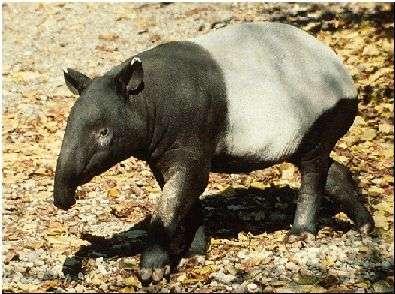Posted By: Andrea Bixler, staff (postdoctoral associate), biology, UM-St. Louis
Area of science: Environment/Ecology
ID: 890794153.En
Message:
There are four species of tapirs in the world. Three live in Central and South America and the other lives in Asia. All are threatened or endangered. Here is a little more information about each species:

- the Brazilian or South American tapir (Tapirus terrestris)
- This is a medium-sized tapir and the most common tapir both in the wild and in zoos. It lives throughout most of northern South America and is threatened by hunting and deforestation.
- Baird's or the Central American tapir (Tapirus bairdi)
- This is the largest New World tapir, weighing in at over 300 kg (660 lb). It is found in southern Central America and is endangered.
- the mountain tapir (Tapirus pinchaque)
- The small mountain tapir weighs about 225-250 kg (500-550 lb) and lives at altitudes of 2000-4000 m (6000-12000 ft) in northwestern South America. It has a dense wooly fleece to protect if from the cold at high elevations. It is endangered.
- the Indian or Asian or Malayan tapir (Tapirus or Acrodia indica, pictured here)
- This is the only Old World tapir and is larger than all the New World species. You may be familiar with it's distinctive black-and-white coloration (the front half of its body and all four legs are dark, the back half of the body is white). The Malayan tapir is also threatened by hunting and habitat destruction.